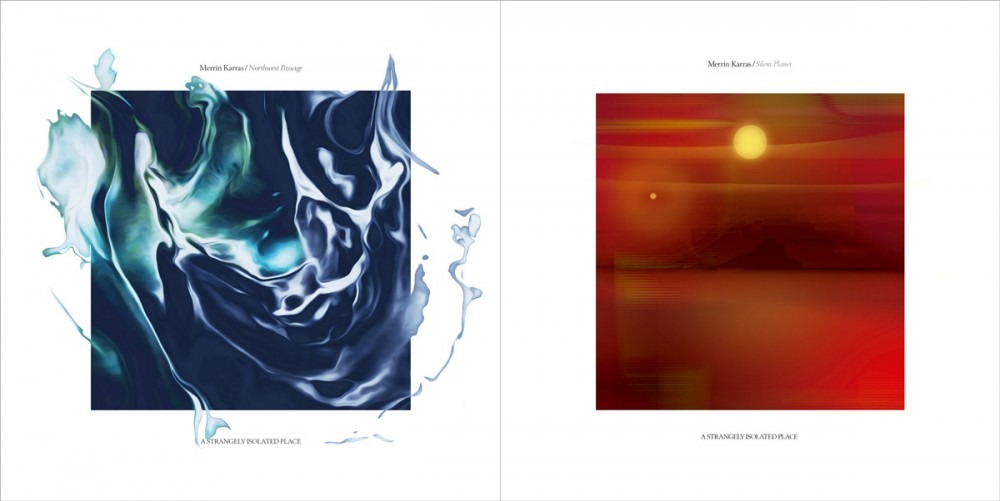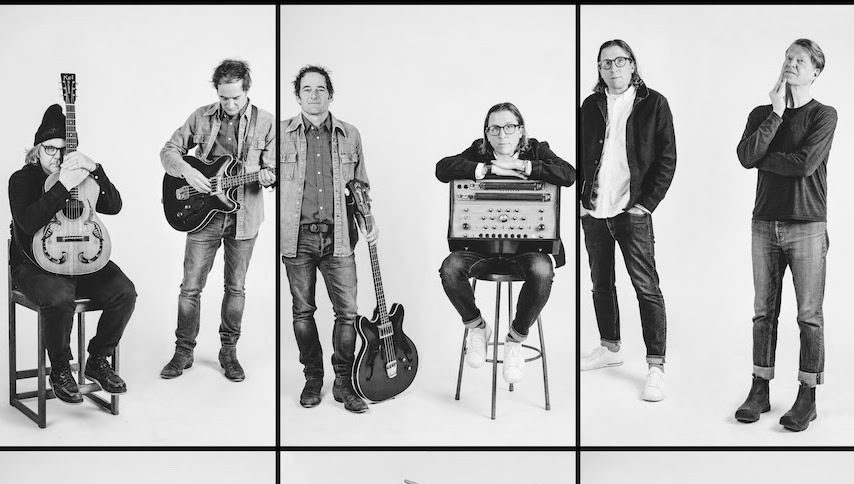During the summer of 1970, Bill Graham presented an extraordinary series of concerts at Tanglewood, the renowned classical music venue located in the scenic Berkshire Hills of western Massachusetts. At the time, presenting rock music in a classical venue was a surprising and precarious step to take. To many, hearing The Fillmore and Tanglewood in the same sentence equated to “when worlds collide.” Much like his approach at the Fillmores, Graham’s “Fillmore at Tanglewood” series presented diverse handpicked triple bills, but with the added advantage of a beautiful open-air venue and plenty of informal lawn seating. With the Fillmore East crew providing technical support, these concerts would be hailed as a technical and artistic triumph and would entertain the largest Tanglewood audiences to date. In a year plentiful in memorable concerts, these Tanglewood performances truly stand out. Jethro Tull and The Who, which opened the 1970 series on July 7th, and Miles Davis and Santana, who closed on August 18th, all delivered outstanding performances that rank with the most inspired of their careers.
Bill Graham presented another equally memorable night at Tanglewood right between those two concerts. On that evening, July 21, 1970, he again presented a group at a pinnacle moment in their career. However, this concert would present the promoter with serious challenges and has a history all its own. Graham originally intended on presenting Joe Cocker and his extravagant Mad Dogs And Englishman revue, literally the biggest rock act touring in 1970. Cocker was booked and advertised, but the demanding logistics of that tour and his deteriorating health brought a premature and permanent demise to the whole endeavor. Without a band, Cocker was forced to back out just weeks before the gig, leaving Graham without a headliner. During the set break between Jethro Tull and The Who on July 7th, Graham announced Cocker’s cancellation. He also greatly enticed the audience and media present by stating that he was 90% certain that Jimi Hendrix would be replacing Cocker as the July 21st headliner.
Despite Graham’s best negotiating efforts, Hendrix, then in the midst of studio sessions (sadly, his last ever) and immersed in managerial problems, was unable to work the performance into his schedule. Some claim Hendrix may have suggested Graham contact Chicago, who were also living in New York City at the time, recording their third album. Regardless of where the idea originated, a guitarist Hendrix admired, Terry Kath, led the group. Although not touring at the time, Chicago performed at Graham’s Fillmore East the previous month and greatly enjoyed the experience. They were up for repeating the experience at Tanglewood and Graham successfully booked the band for the July 21st gig, just as they began riding the wave of breakout second album success and a sudden string of hits. Chicago would become the last minute headliner on an impressive triple bill that, in typically diverse Graham style, featured the New Orleans-based Preservation Hall Jazz Band and former Lovin’ Spoonful leader (and now Woodstock superstar following the blockbuster theatrical and soundtrack album releases) John Sebastian, as openers.
At a time when many ticket holders perceived Chicago as a new commodity untested beyond a few catchy AM radio hits, they were essentially replacing two Woodstock superstars (Cocker/Hendrix) on the July 21st bill. Well attended by journalists and media, the “Fillmore at Tanglewood” gigs were relatively high profile events, where the band would be performing before a more discerning audience than usual. When Chicago hit the stage at Tanglewood, the pressure was on and they had everything to prove.
Any doubts Graham may have had about inviting Chicago to headline were completely annihilated within minutes of the band hitting the stage. Chicago not only proved up to the challenge but, before the night was over, exceeded all expectations, including their own. The band delivered a monstrous performance, and if it were up to the audience and there was no strictly enforced curfew, Chicago literally could have played all night. Presented here is all the evidence, newly mixed from Bill Graham’s never-before-heard multitrack masters, stored away for four decades. Not only are these recordings sonically spectacular, but they capture a pinnacle performance in Chicago’s early career, when the internal chemistry of the initial lineup was at its apex and their live performances most magical. For fans of the original lineup and Terry Kath fans in particular, this recording is indeed a holy grail, containing a performance for the ages that rivals anything happening at the time.
Following Bill Graham’s stage introduction, Chicago tears into their own “Introduction,” the pile-driving Terry Kath composition that opened their debut album. Featuring the powerhouse guitar playing of Kath, this raw, aggressive blues-oriented number fuses elements of blues, jazz and rock into a style that is dynamic, original and immediately compelling. The same can be said for Kath’s celebration of natural beauty, “In The Country,” which immediately follows. A standout track from the band’s second album, this unbridled live performance, with Kath and Cetera belting out complimentary vocal lines, simply seethes with joyous energy and leaves the excellent sophomore album version pale in comparison. Kath’s guitar work is extraordinary here, even when he’s just comping. Anyone curious why Hendrix admired Kath need listen no further, as his searing lead lines are plentiful here. These two openers, neither of them hits, remind listeners that this was a band with wide-ranging creativity and serious musicianship.
An electric piano improvisation by Robert Lamm is next, serving as a prelude to “Does Anyone Really Know What Time It Is,” which would be released as a single three months later and become the group’s 4th smash hit in a row. Lamm’s “Free Form Piano” sequence, much like it did on the debut album, leads directly into a tight, nearly letter perfect rendition of “Does Anyone Really Know What Time It Is” when it was fresh and vibrant. This has become one of Lamm’s most enduring songs and here it sounds better than ever.
A brief improvisation led by Kath allows him a bit of spontaneous free form noodling before he rips into a truly riveting performance of “25 Or 6 To 4.” With Peter Cetera on lead vocals and Kath’s fluid guitar work interjecting at every opportunity, this is a staggering performance that must be heard to be believed. Released the previous month, this was the band’s current single at the time and they give it everything they’ve got, especially Kath, who delivers a searing solo that goes on and on, every second of it inspired.
Lamm’s electric piano and the horn section initially draw the listener in on a lovely reading of “Poem For The People,” another track from the debut album. Featuring several tempo shifts, this has the versatile rhythm section of Cetera and Seraphine propelling the music in a jazzier direction, which becomes a bed for some truly outstanding horn arrangements. By the end of this number Chicago has the Tanglewood audience pretty firmly under its spell.
That being the case, the band seizes the opportunity to introduce a pair of new songs, both destined for their third album. This begins with the Kath/Lamm collaboration, “I Don’t Want Your Money.” This is Chicago rocking as hard as any band of the era, featuring yet another gritty guitarfest from Kath and the horn section punctuating a great vocal from Lamm. This is followed by “Mother,” a new Lamm composition that showcases another one of band’s great strengths, the improvisational skills of trombonist James Pankow.
The remainder of the set is a true tour-de-force, beginning with a powerful performance of “It Better End Soon.” Composed by Kath and Lamm with contributions from Parazaider, this highly ambitious piece conveys the most adventurous side of the band. Written in response to the ongoing war in Vietnam, this modular composition provides plenty of room to stretch out and improvise. Parazaider takes an impressive extended solo on flute and maintains a strong presence throughout, while the song builds on the chunky riffs from Kath and swirling organ work from Lamm. At one point, the horns drop out, leaving the guitar, bass, organ and drums to jam and the result is quite enticing, sounding not unlike Jimi Hendrix’s short-lived Band Of Gypsies trio from six months prior. Nearly 15 minutes in length and increasing in intensity the entire time, here Chicago proves themselves equally adept at working in a loose structure as they were at conveying tightly arranged hits. One of the most enjoyable examples of the latter follows with “Beginnings,” a near perfect blend of pop and jazz, with a gradually emerging Latin beat. This features an infectious lead vocal by Lamm, plenty of 7th chords and outstanding solos from Pankow on trombone and Loughnane on trumpet. “Beginnings” would have the distinction of being released as a single twice, first in October of 1969 where it met with modest success and again in June of 1971 (with “Colour My World” as the b-side), when it became yet another smash hit.
James Pankow’s ambitious song cycle, “Ballet For A Girl In Buchannon,” which spawned two more hits for the band, closes this remarkable set. Better known for the pair of Top Ten hits contained within, “Make Me Smile” and “Colour My World,” this is another fascinating performance and a dynamic set closer. Fifteen minutes long in its entirety, with a structure inspired by Pankow’s love of classical music, this was the centerpiece of their second album and a true testament to the group’s undeniable creativity. This outstanding performance also proves that Chicago’s early success was no result of studio enhancements or gimmicks. This is a live band quite capable of backing up the promise of their best studio recordings onstage and in most cases surpassing them. When the final notes of the “Make Me Smile” reprise conclude, the Tanglewood audience erupts with applause and is determined not to let the band go.
When they return to the stage for their encore, it is with limited time due to a strictly enforced curfew. Beginning with Cetera’s lead-in bass line, they pack a serious wallop into the encore with an incendiary performance of the Spencer Davis Group hit, “I’m A Man.” The only cover song featured on the debut album, this features all three singers (Kath, Lamm and Cetera) taking a turn on lead vocals, and also showcases Danny Seraphine’s remarkable drumming with the entire horn section becoming additional percussionists. Although Chicago’s version features lyrics as they misunderstood them, rather the actual words Jimmy Miller and Steve Winwood wrote, their version easily rivals the great original. It’s no wonder that their arrangement, minus the extended percussion break, became yet another hit the following year.
The recording concludes with the ecstatic Tanglewood audience literally going nuts and still howling for more. They are so exuberant that the band does come back out to express their appreciation, with Kath relaying that they cannot perform any longer (due to the curfew.) At this point, a very happy Bill Graham takes over and addresses the audience with several closing announcements, including an invitation to the final show in his 1970 Tanglewood series, which would feature Miles Davis and Santana a few weeks later.
-Written by Alan Bershaw



